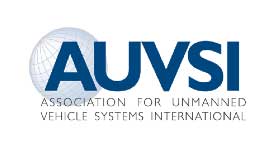A copy of the prepared testimony Michael Toscano, president and CEO of the Association for Unmanned Vehicle Systems International, will submit to the House Homeland Security – Subcommittee on Oversight, Investigations and Management hearing, “Using Unmanned Aerial Systems Within the Homeland: Security Game Changer? ” scheduled for tomorrow, Thursday, July 19 at 9:30 a.m.
The entire document is available to read when you click on the graphic on the right.
The document addresses the many helpful uses of UVS including finding a lost child, help with understanding hurricanes, as well as wildfires, and monitoring the borders, assisting with necessary data regarding the severe flooding of the Red River in the upper Midwest. While there are many positive tasks that can be undertaken there must also be limitations with an appropriate Code of Conduct.
In the testimony, Mr. Toscano discusses the many potential uses for unmanned aircraft systems (UAS), and the industry’s efforts to ensure a safe and responsible integration of UAS into the national airspace. The testimony lays out the UAS industry’s commitment to safety, highlighted by the industry’s recently released “Code of Conduct,” as well as the technological advancements to help ensure their safe operation.
In addition to safe operations, the industry is committed to building safeguards into UAS technology, such as “sense and avoid” systems and other innovations, which will enable a safe and orderly integration. For example, the U.S. Army recently completed a two-week evaluation of a Ground Based Sense and Avoid (GBSAA) system at Dugway Proving Ground in Utah. The system uses 3-D radar and software algorithms to detect other aircraft flying in the vicinity of UAS, and safely steer UAS away from other aircraft. In both live and simulated tests, the system successfully recognized conflicts and navigated UAS away from other aircraft.
The GBSAA system provides a window into the type of “sense and avoid” technologies available for the U.S. domestic airspace. Meanwhile, the development of this particular system is ahead of schedule. The Army has said the GBSAA could be deployed as early as March 2014, one full year ahead of the Army’s initial estimate of 2015.
In addition to “sense and avoid” systems, it is important to underscore that many UAS have multiple redundant systems that add extra layers of safety and security. This is an especially relevant point in light of the recent media attention surrounding so-called ‘spoofing’ of a GPS signal by researchers at the University of Texas.
‘Spoofing’ is not a new issue. Papers have been written on the subject since the 1990s and, in 2001, the U.S. Department of Transportation broadly examined vulnerabilities in the GPS system relating to aviation, maritime and ground applications.
The industry is well-aware of ‘spoofing.’ Meanwhile, as the DOT vulnerability assessment demonstrates, ‘spoofing’ is not a concern unique to UAS. ’Spoofing’ has implications for any technology that depends on GPS for guidance and timing, whether it is manned or unmanned aircraft, your cell phone or your car. In fact, commercial airliners are relying more and more heavily on GPS signals to locate the runways at airports and, with the advent of the next generation air traffic control system, all aircraft – manned and unmanned – will rely on GPS for navigation.
At the same time, ‘spoofing’ is not as simple or easy as news reports suggest. To successfully spoof a GPS signal, one must have the equipment and capability to broadcast a counterfeit signal at a high enough power level to overpower the GPS signals emanating from more than 20 satellites in orbit around the earth. One must know the location of the target vehicle and be able to track it. If the target vehicle is not in close proximity to the spoofing device, this requires a detection system such as radar.
Meanwhile, custom software is needed to make adjustments to the target vehicle’s course. It took the University of Texas team four years to develop the necessary software, and the professor overseeing the experiment has acknowledged that the skills involved in ‘spoofing’ are “outside the capability of any average American citizen.”
In sum, in a controlled experiment where an aircraft is kept low to the ground, hovering in place and equipped with minimal safeguards, spoofing is feasible. Under real-world conditions, however, ‘spoofing’ is much more difficult.
That said, the industry takes the potential for ‘spoofing’ very seriously and is already advancing technologies, such as SAASM – Selective Availability Anti-Spoofing Module – to prevent it. SAASM, which involves the authentication of encrypted satellite signals, is already widely used by the military to thwart GPS spoofing. The Department of Defense (DOD) issued a directive that, as of October 2006, required all newly acquired UAS systems—as well as systems going through major modifications or upgrades—to be SAASM-equipped. As has happened with other technologies, innovations developed for the military could transition in some form to the civilian market in the years to come. In fact, GPS itself was a military technology that transitioned to civilian use.


